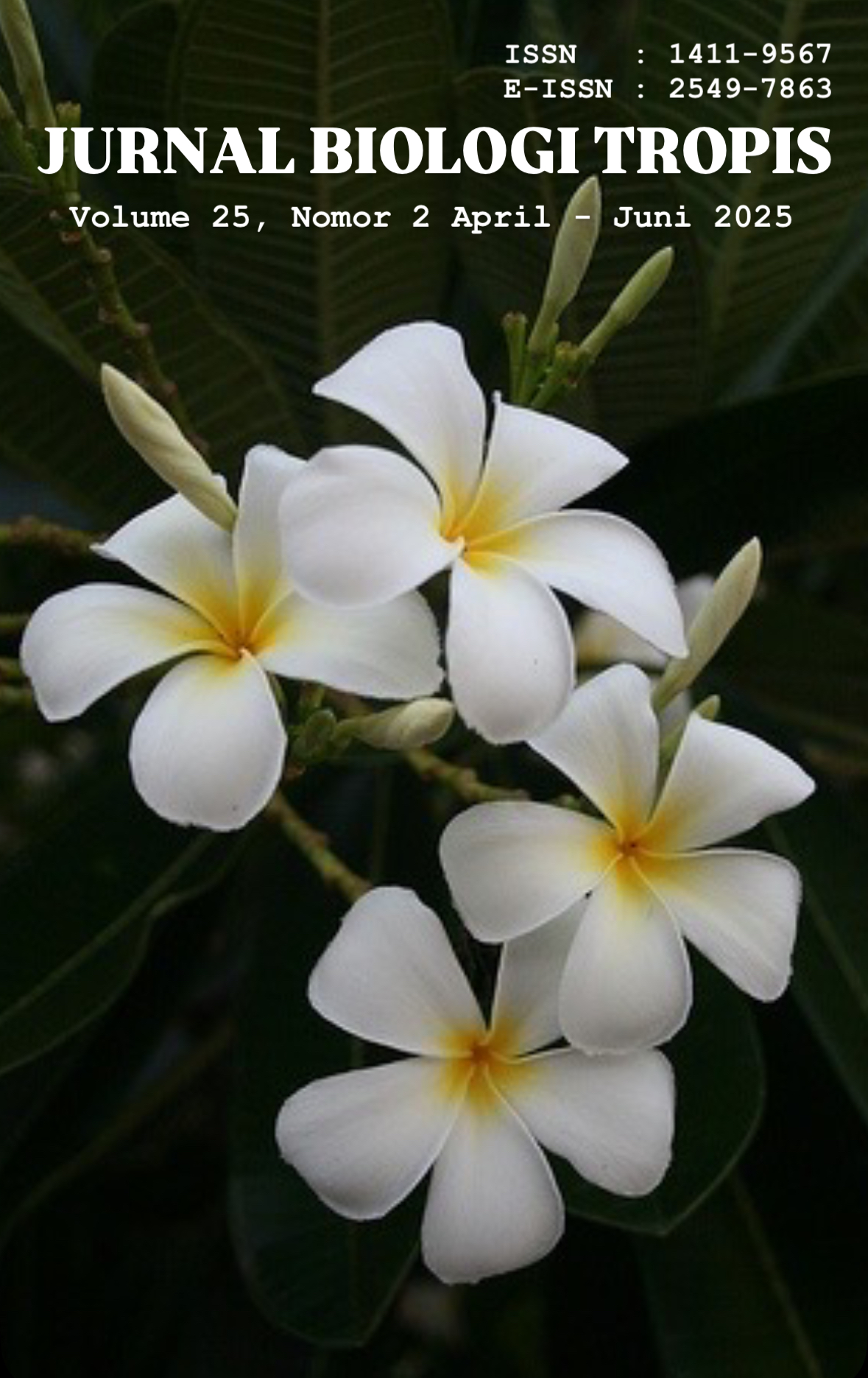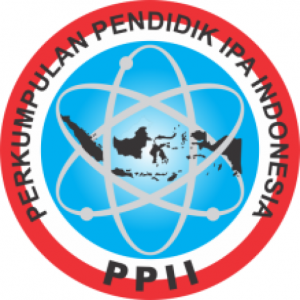Differences in The Incidence of Urinary Tract Infection (UTI) in Women Using Herbal and Non-Herbal Sanitary Napkins
Authors
Rahma Yanti , Yusianti SilvianiDOI:
10.29303/jbt.v25i2.8873Published:
2025-04-30Issue:
Vol. 25 No. 2 (2025): April-JuniKeywords:
Dipstick test, herbal, microscopic, non-herbal, urinary tract infection.Articles
Downloads
How to Cite
Downloads
Metrics
Abstract
Urinary Tract Infection (UTI) is a common health issue among women, including those caused by the use of menstrual pads. This study aims to investigate the difference in the incidence of UTI between women using herbal and non-herbal pads at Prodia Clinical Laboratory in Palembang. This research employed an analytical observational design with 31 female employees as subjects. Sampling was conducted using a questionnaire and complete urine tests, including dipstick and microscopic examination. The results showed that 10.5% of non-herbal pad users were suspected of having UTI, while no herbal pad users were suspected of having UTI. Based on the Mann Whitney U statistical test, no significant differences were found between the two groups (p > 0.05). This study concluded that there is no significant difference in the incidence of UTI between users of herbal and non-herbal pads. Further research with a larger sample size is recommended to confirm these findings.
References
Alley, M. E. (2016). Urinary tract infections in the pediatric patient. Physician Assistant Clinics, 1(4), 639–660.
Andrade, C. (2020). Sample size and its importance in research. Indian Journal of Psychological Medicine, 42(1), 102–103.
Annisah, N., Amri, I., & Basry, A. (2024). Faktor Risiko Infeksi Saluran Kemih (ISK): Literature Review. Jurnal Medical Profession (Medpro), 6(1), 86–93.
CDC. (2016). Provider performed microscopy procedures: a focus on quality practices. Centers for Disease Control and Prevention.https://stacks.cdc.gov/view/cdc/38523
Hadawiyah, A., Sukma, P., Resnhaleksmana, E., Khusuma, A., & Jiwintarum, Y. (2024). Penentuan Hasil Mikroskopis Infeksi Saluran Kemih Metode Pewarnaan Gram dengan Menggunakan Perlakuan Urine Sentrifugasi dan Tanpa Sentrifugasi. 3(2), 74–81.
Hay, A. D., Sterne, J. A. C., Hood, K., Little, P., Delaney, B., Hollingworth, W., Wootton, M., Howe, R., MacGowan, A., Lawton, M., Busby, J., Pickles, T., Birnie, K., O’Brien, K., Waldron, C.-A., Dudley, J., Voort, J. van der, Downing, H., Thomas‐Jones, E., … Butler, C. (2016). Improving the Diagnosis and Treatment of Urinary Tract Infection in Young Children in Primary Care: Results From the DUTY Prospective Diagnostic Cohort Study. The Annals of Family Medicine, 14(4), 325–336. https://doi.org/10.1370/afm.1954
Irawan, E. (2018). Faktor-Faktor Penyebab Infeksi Saluran Kemih (ISK) (Literature Review). Prosiding Seminar Nasional Dan Penelitian Kesehatan 2018, 1(1).
Khabipova, N., Valeeva, L., Shaidullina, E., Mardanova, A., Gimadeev, Z., & Sharipova, M. (2022). Antibiotic susceptibility and resistance of P. aeruginosa uropathogenic isolates.
Khasanah, N. A. H., Husen, F., & Yuniati, N. I. (2024). Profil Sedimen Urin Pasien Suspek Infeksi Saluran Kemih Di Puskesmas Purwokerto Selatan. Jurnal Kesehatan Dan Science, XX(2), 51–59.
Kumala, I., Triswanti, N., & , Hidayat, R. L. T. (2016). Gambaran Hasil Pemeriksaan Urinalisis Pada Pasien Infeksi Saluran Kemih Yang Terpasang Kateter. Jurnal Medika Malahayati, 7(1), 1–23.
Mayasari, W., Taribuka, N., Zubaedah, Z., & Warhangan, H. (2021). Penggunaan Jenis Pembalut Berhubungan dengan Kejadian Keputihan. Jurnal Kebidanan Malakbi, 2(1), 26. https://doi.org/10.33490/b.v2i1.372
Nabila, I. (2015). Manfaat Pemakaian Pembalut Herbal Untuk Mencegah Infeksi Saluran Kemih (Evaluasi Pada Mahasiswi Kedokteran yang Belum Menikah.
Pratistha, F., Sudhana, M., & I Wayan Adnyana, I. W. L. (2019). Diagnosis cepat infeksi saluran kemih dengan menghitung jumlah leukosituria pada urinalisis metode flowcytometry sysmex ux-2000 dengan baku emas kultur urin di RSUP Sanglah Denpasar. Udayana Juornal of Internal Medicine, 1(2), 52–56.
Rinawati, W., & Aulia, D. (2022). Update Pemeriksaan Laboratorium Infeksi Saluran Kemih. Jurnal Penyakit Dalam Indonesia, 9(2), 124. https://doi.org/10.7454/jpdi.v9i2.319
Sabriani, J., Umboh, A., & Manoppo, J. I. Ch. (2021). Perbandingan Leukosituria, Nitrit, Leukosit Esterase dengan Kultur Urin dalam Mendiagnosis Infeksi Saluran Kemih pada Anak. Medical Scope Journal, 2(2), 78–86. https://doi.org/10.35790/msj.v2i2.32596
Sari, E. (2023). Perbandingan Kadar Haemoglobin dan Hematocrit pada Remaja Putri Sebelum dan Sesudah Menstruasi di SMA Muhammadiyah 5 Palembang. Jurnal Inspirasi Kesehatan, 1(1), 95–103.
Stein, R., Dogan, H. S., Hoebeke, P., Kočvara, R., Nijman, R. J. M., Radmayr, C., & Tekgül, S. (2015). Urinary tract infections in children: EAU/ESPU guidelines. European Urology, 67(3), 546–558.
Sulistiani, A. A., Artati, Djasang, S., & Mursalim. (2021). Korelasi Hasil Bakterial Pada Urin Rutin Dengan Kultur Urin Terhadap Pasien Diagnosa Infeksi Saluran Kemih. Jurnal Media Analis Kesehatan, 12(2), 56–65.
Sulochana, S., Fatima, J., Siddartha, J. R., & V., S. K. N. (2021). Urine Analysis in KUB Calculi in a Tertiary Care Hospital. International Journal of Research in Medical Sciences, 9(7), 1950. https://doi.org/10.18203/2320-6012.ijrms20212514
Susanti, E. M., & Wijaya, P. S. (2018a). Perbedaan Penggunaan Pembalut Dan Pantyliner Jenis Biasa, Herbal, Dan Kain Dengan Kejadian Keputihan. Indonesia Jurnal Kebidanan, 2(1), 31–36.
Susanti, E. M., & Wijaya, P. S. (2018b). Perbedaan Penggunaan Pembalut Dan Pantyliner Jenis Biasa, Herbal, Dan Kain Dengan Kejadian Keputihan. Indonesia Jurnal Kebidanan, 2(1), 31. https://doi.org/10.26751/ijb.v2i1.427
Susilowati, F., Yetty, K., Maria, R., & Rizany, I. (2024). Gambaran personal hygiene dengan kejadian infeksi saluran kemih (ISK) pada wanita: A systematic literature review. Holistik Jurnal Kesehatan, 18(3), 266–275.
Trinadi, I., Arguni, E., & Hermawan, K. (2016). Validasi kriteria diagnosis infeksi saluran kemih berdasarkan American Academy of Pediatrics 2011 pada anak usia 2-24 bulan. Sari Pediatri, 18(1), 17–20. https://doi.org/10.14238/sp18.1.2016.17-20
Wati, P. S., Ririanty, M., & Nafikadini, I. (2019). Perilaku Menjaga Kebersihan Organ Genetalia Pada Konsumen Pembalut Herbal. Jurnal Kesehatan, 7(1), 20–29. https://doi.org/10.25047/j-kes.v7i1.71
Werneburg, G. T., & Rhoads, D. D. (2022). Diagnostic stewardship for urinary tract infection: A snapshot of the expert guidance. Cleve Clin. J. Med, 89, 581–587.
Widiyastuti, S. F., & Soleha, T. U. (2023). Faktor Faktor Yang Mempengaruhi Terjadinya Infeksi Saluran Kemih. Fakultas Kedokteran Universitas Lampung, 13, 1069–1073.
Zhou, Y., Zhou, Z., Zheng, L., Gong, Z., Li, Y., Jin, Y., Huang, Y., & Chi, M. (2023). Urinary tract infections caused by uropathogenic Escherichia coli: mechanisms of infection and treatment options. International Journal of Molecular Sciences, 24(13), 10537
License
Copyright (c) 2025 Rahma Yanti, Yusianti Silviani

This work is licensed under a Creative Commons Attribution 4.0 International License.

Jurnal Biologi Tropis is licensed under a Creative Commons Attribution 4.0 International License.
The copyright of the received article shall be assigned to the author as the owner of the paper. The intended copyright includes the right to publish the article in various forms (including reprints). The journal maintains the publishing rights to the published articles.
Authors are permitted to disseminate published articles by sharing the link/DOI of the article at the journal. Authors are allowed to use their articles for any legal purposes deemed necessary without written permission from the journal with an acknowledgment of initial publication to this journal.


























